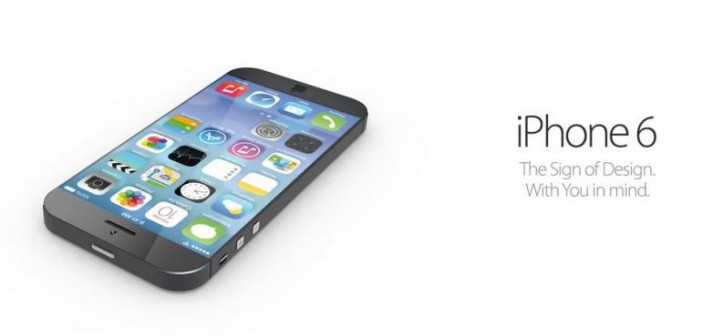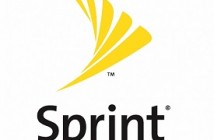Apple Inc (NASDAQ: AAPL) is generally expected to reveal its iPhone 6 in two model versions. One will feature a typical smartphone design with a 4.7 inch screen, and one will cater to the phablet market with a 5.5 inch display screen.
The relase of two separate new iPhone at one time is a significant departure from the era of the last Steve Job’s policy of building just the best device, to a more mature and smarter product diversification strategy. While it is uncertain whether the release of the iPhone 6 can pull up the declining market share of the iPhone in 2013, the latest data from IDC hints at a likely possibility for such an occurrence.
Rumors Of Revision
When Re/code released their report of Apple’s new iPhone 6, it did not mention anything about the sapphire screen that was almost confirmed to be a part of the iPhone 6’s construction. It seems that the sapphire glass screens will not make it to iPhones on the market this year. However, there is the possibility that Apple will produce a limited number of iPhones with sapphire screens that are available for purchase for a premium price.
In any case, consumers can at most expect a sapphire glass laminate. A solid sapphire screen would be much too expensive as a bulk material to be used in the iPhone 6, considering the current sapphire boule production and the process of diamond saw method.
Instead, Apple will probably use a new and improved version of Gorilla Glass for its new smartphones’ screens.
Rumors claimed that GT Advanced Technologies Inc (NASDAQ: GTAT) would supply Apple with the sapphire screens. The company uses a process called Hyperion, which can produce extremely thin, 20 micro wafers of sapphire at an economical price. However, the issue is transitioning it into mass production. The hurdles that the Arizona plant must overcome – increasing production speed, finding the solar array to power it, and getting the process into mass production – all seem too overwhelming to have sapphire screens ready for the iPhone 6.
Those not familiar with the industry often underestimate the amount of time these processes take. A report about the company’s progress in February earlier this year stated that operations were not even in place to support production of the iPhone 6 in the first or second quarter, which would be necessary if the company hopes to release the iPhone 6 onto the market by September.
Optimistic Views
Despite the absence of a sapphire screen, the iPhone 6 is on track to gain a significant and sustainable amount of the market for the iPhone. In the following chart, Apple’s iPhone is compared against the top five vendors rather than all the players in the smartphone market. This chart excludes low-tech smartphones that run the Android operating system, as well as lower tier smartphones that are geared towards emerging markets.
As we can see from the chart, Apple’s market share as of 2013 had dropped.
However, the latest IDC data shows that this decline may be reversing in 2014. For the first and second quarter of this year, the IDC released data regarding the top five smartphone sellers, including data regarding year over year comparison for 2013.
The gap in the graph is because the IDC did not publish last year’s data.
This chart shows that Apple has increased in the top five market share in 2014 from 2013. The gains are small – having made a 26% increase in the second quarter fo 2014 compared to the 23% gain in the second quarter of 2013. However, it is still progress, especially since Samsung lost share in the top five market in the second quarter of 2014.
The Wealth Advantage
The data confirms a significant trend that affects the entire industry. The computer processor industry is transitioning from commodity processors such as Intel (NASDAQ: INTC)’s model to integrated device makers, such as Apple’s model.
Apple and Samsung have both amassed a significant amount of wealth and funds, and could use that capital to gain a leg up in the competition against established commodity processor makers and device makers. An example of the advantage of funds is Apple’s creation of the 64 bit A7 and its positive effect on the popularity and sales of the iPhone.
While most of the focus of the upcoming iPhone 6 has been its rumored sapphire screens, investors should focus more on Apple’s next move regarding its SOC. The company’s next generation SOC, known as the A8, will most likely have the most significant impact to Apple’s future. The company’s wealth advantage will clearly be shown in the new innovations that come with the A8, such as a multi core design and a smaller node for processing.
Apple’s SOC may end up determining whether or not Apple continues to gain market share against the top five competitors.





Pingback: alpha88 เข้า สู่ ระบบ
Pingback: ufabtb
Pingback: spherical silica powder
Pingback: post
Pingback: find more info
Pingback: sex 2024
Pingback: b52
Pingback: ส่งพัสดุ
Pingback: สมัครเน็ต ais
Pingback: runtz disposable vape pen
Pingback: บริษัทรับสร้างบ้านเชียงใหม่
Pingback: dayz cheats
Pingback: house for sale hua hin
Pingback: แทงบอลแบบมั่นคงปลอดภัยกับเว็บที่เชื่อถือได้อย่าง LSM99
Pingback: free show
Pingback: nshtou
Pingback: live shows
Pingback: pakong188
Pingback: บาคาร่า all เกมไพ่ผ่านมือถือ เดิมพันขั้นต่ำ 1 บาท
Pingback: šeit
Pingback: discount codes
Pingback: Voxcasino
Pingback: lotto888
Pingback: สล็อตออนไลน์เกาหลี
Pingback: pilates instructor woodland hills
Pingback: Lucky neko สล็อตแมวนำโชค เว็บตรง ค่าย pg slot
Pingback: โรงงานผลิตสปริง
Pingback: casino
Pingback: ป๊อกเด้ง108
Pingback: Chicken Road
Pingback: visite o site do desenvolvedor do jogo
Pingback: สั่งสินค้าจากจีน
Pingback: bestcasinosite
Pingback: ฆอ
Pingback: เกมไพ่
Pingback: Edibles UK
Pingback: power supply for gaming
Pingback: บาคาร่า168 เว็บตรง
Pingback: ตู้ล่าม
Pingback: essentials
Pingback: bigcasino apk
Pingback: Buy Villa Phuket
Pingback: av ซับไทย
Pingback: เช่าเครื่องสเลอปี้
Pingback: ไก่ตัน
Pingback: Sweet Bonanza
Pingback: ufabet789
Pingback: slot Book of Ra
Pingback: alyarmook
Pingback: ทำนายสกอร์